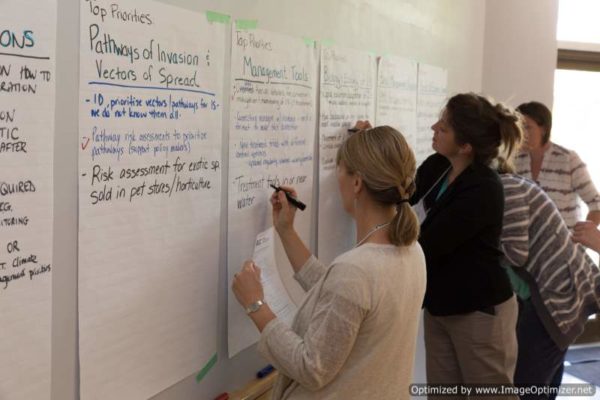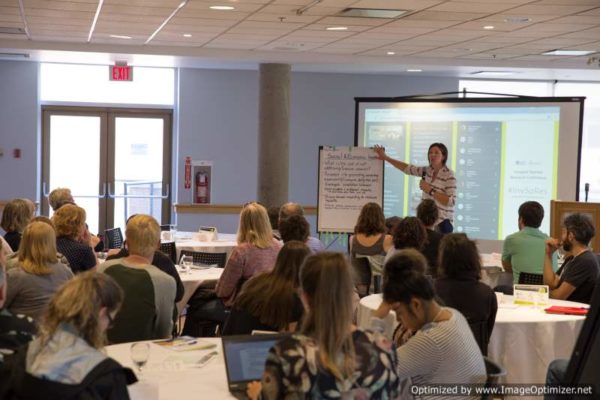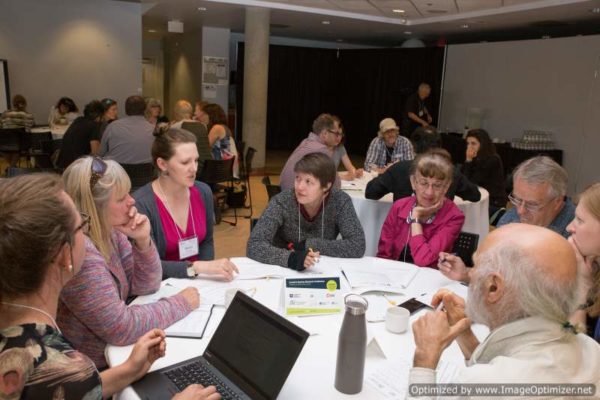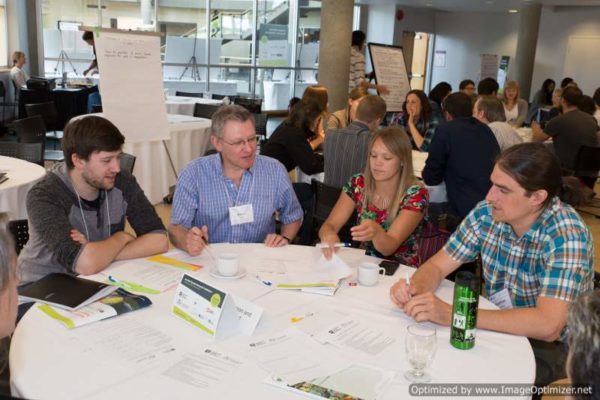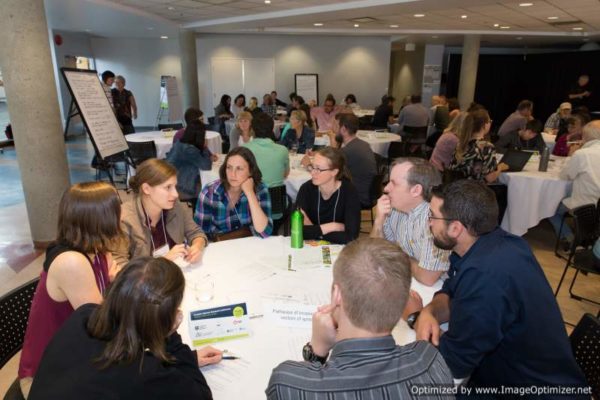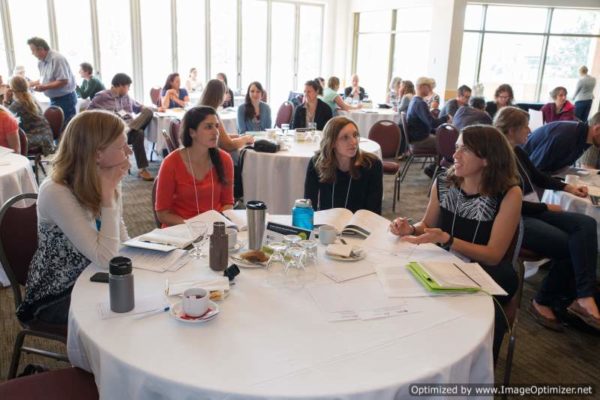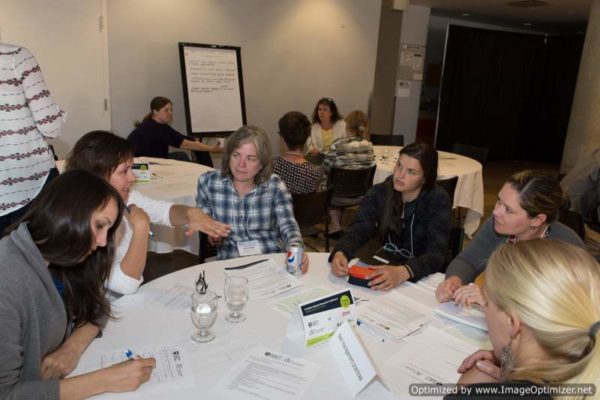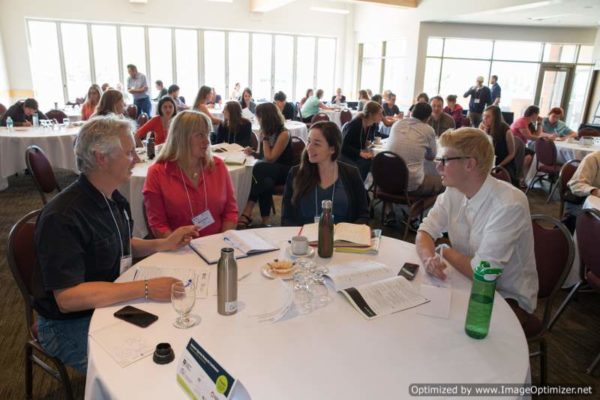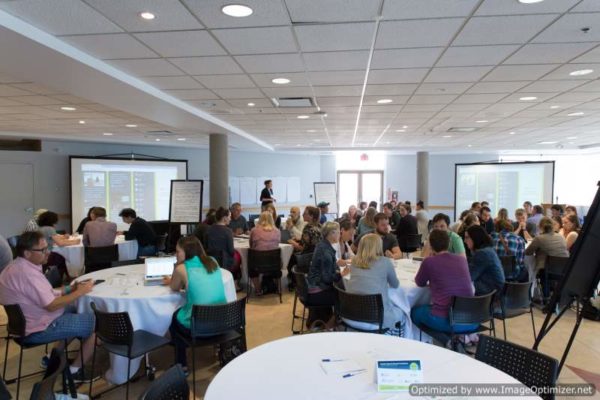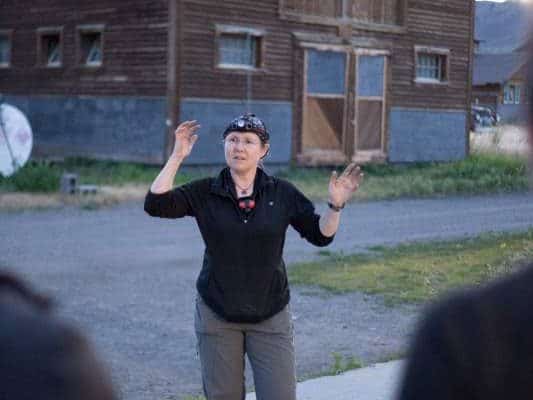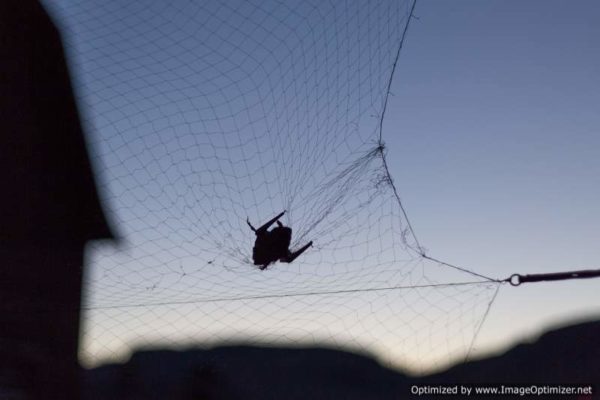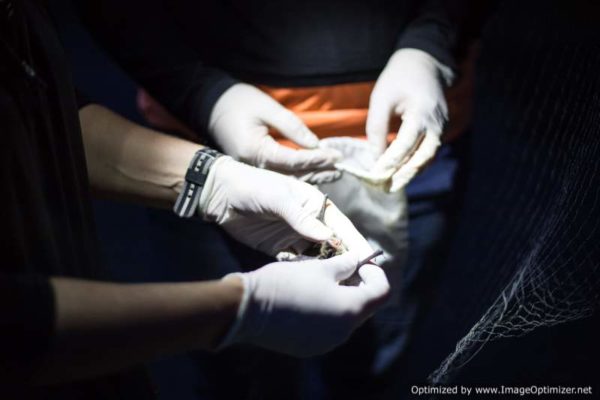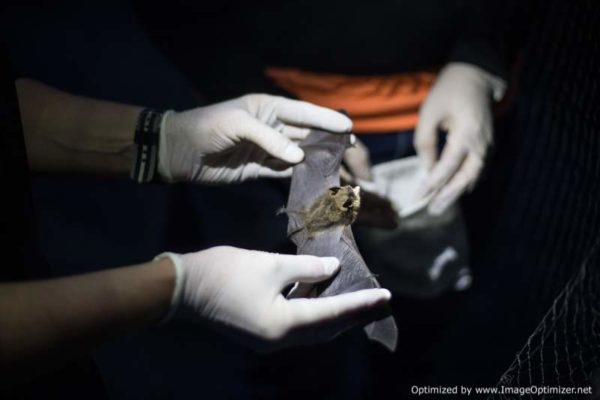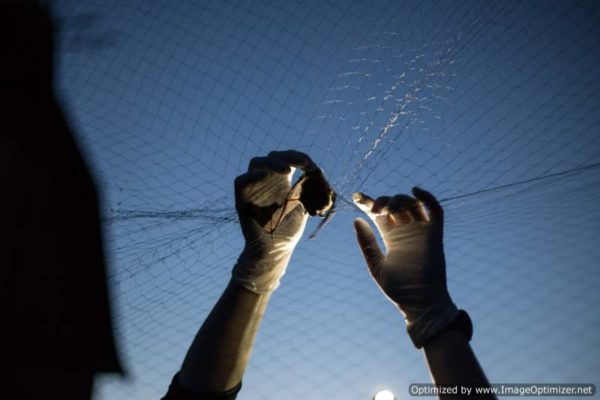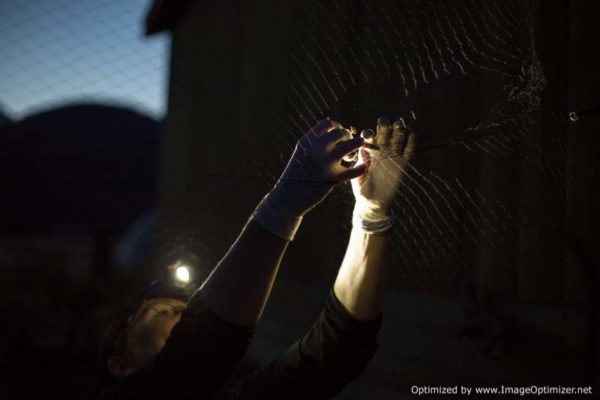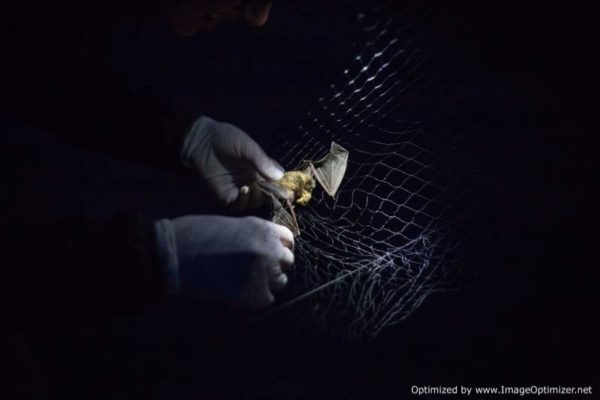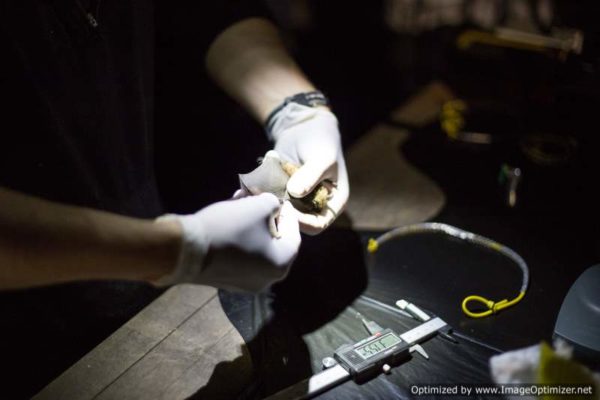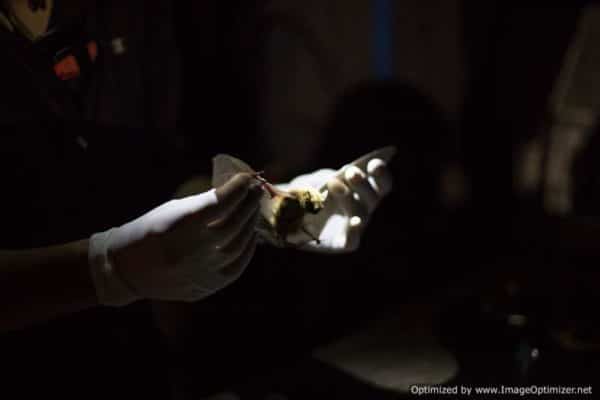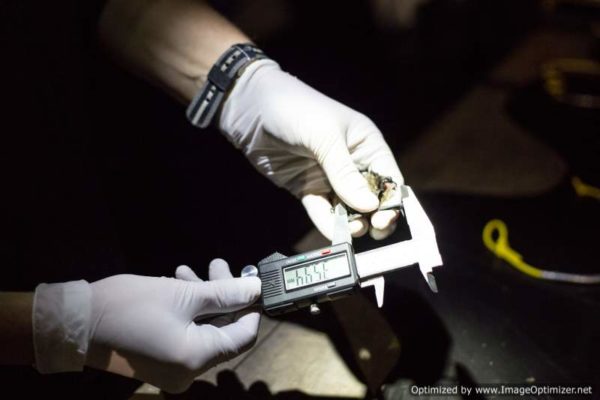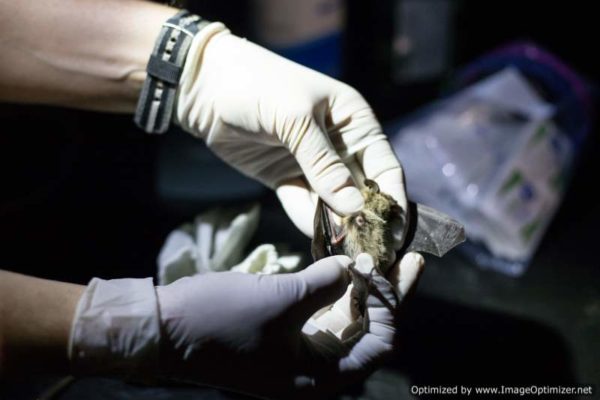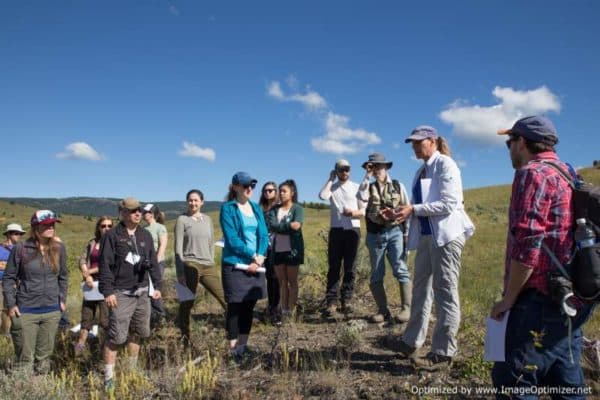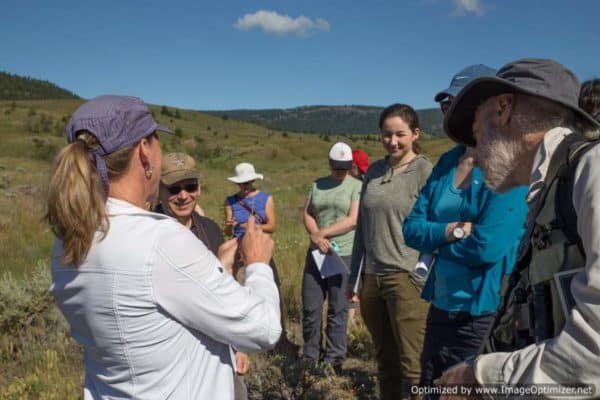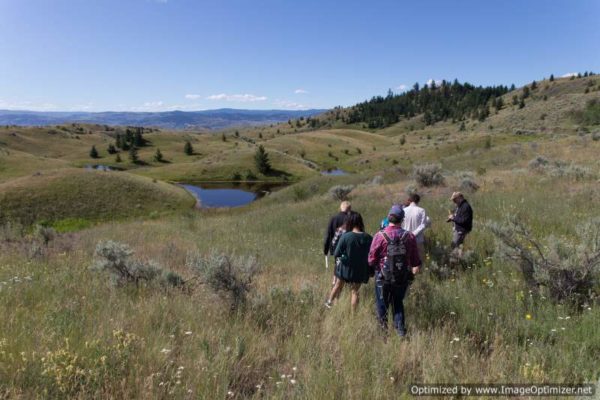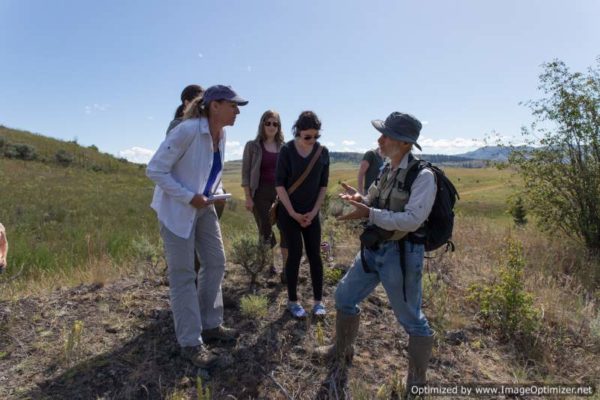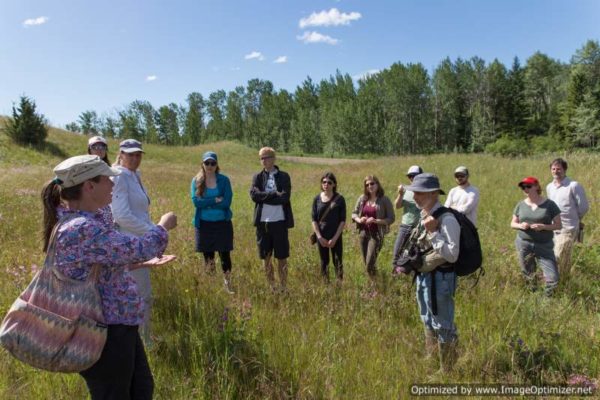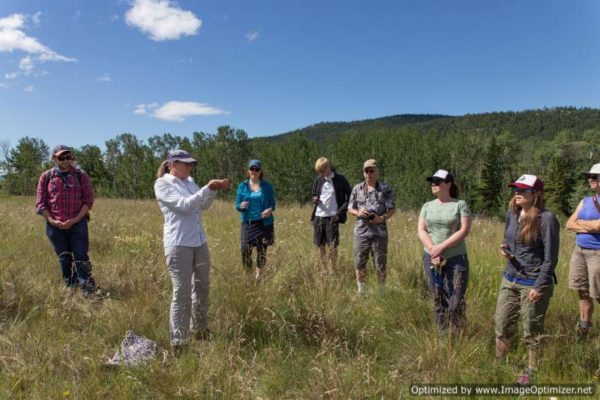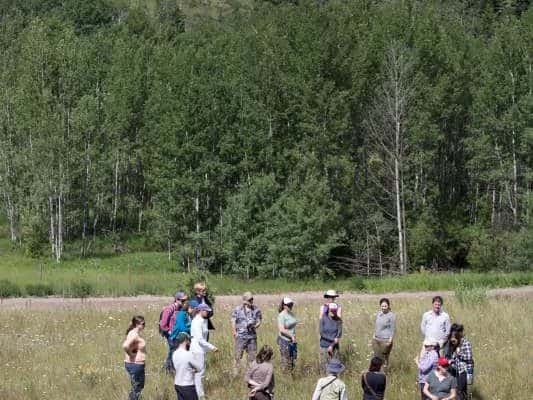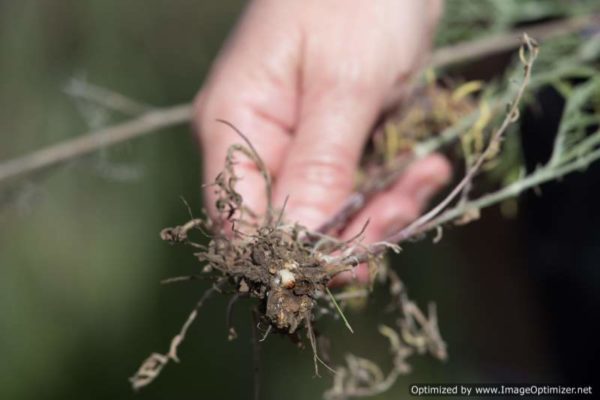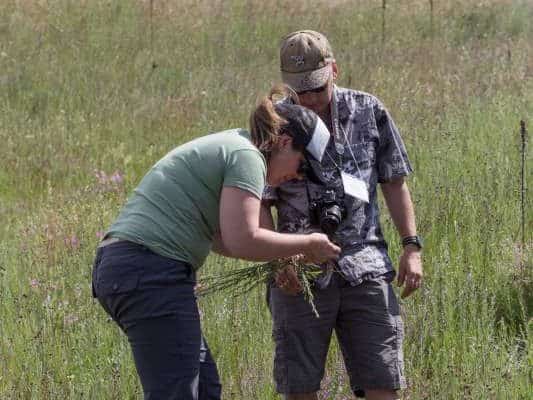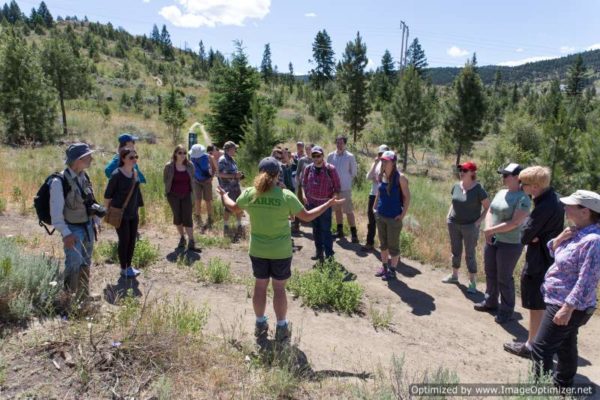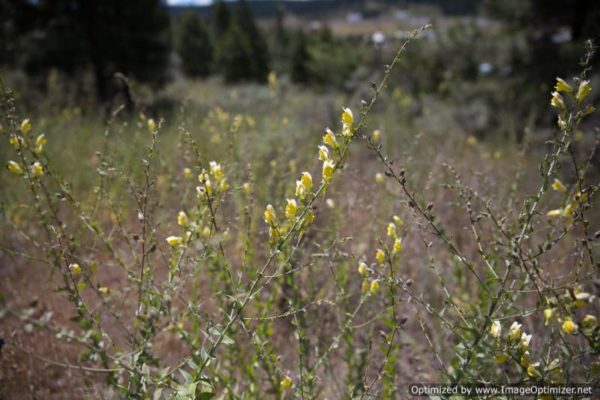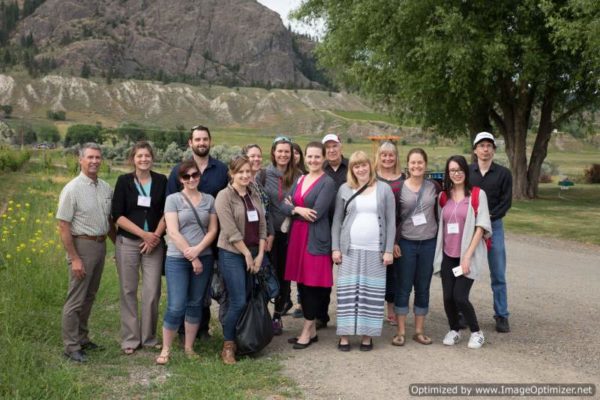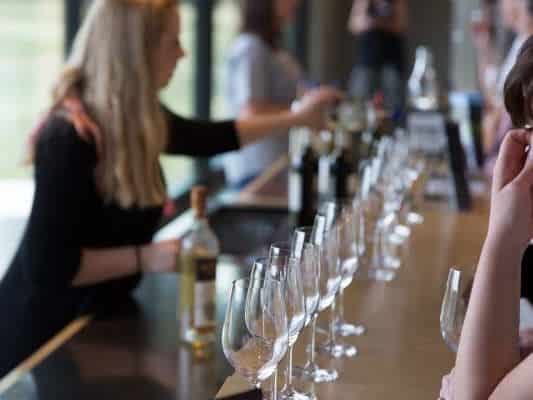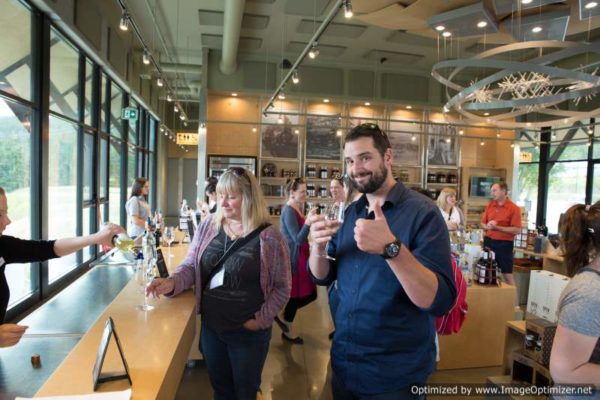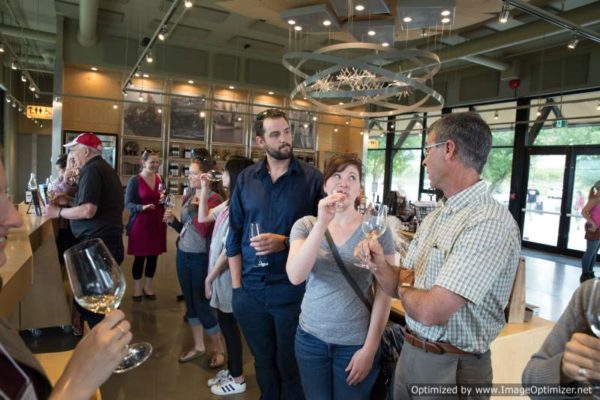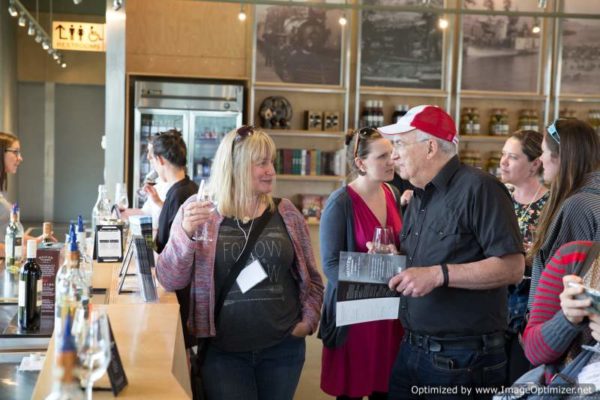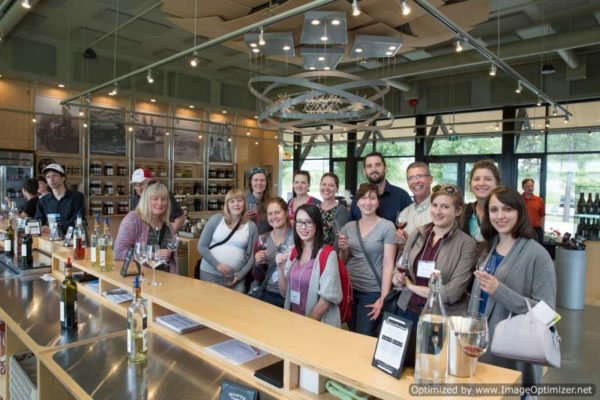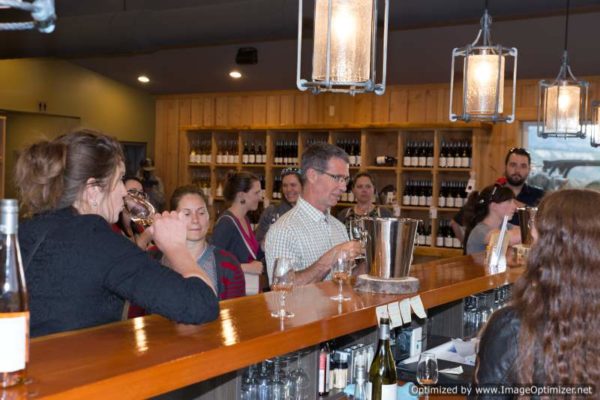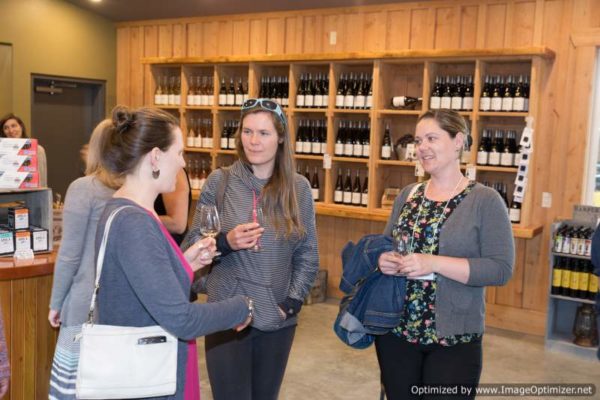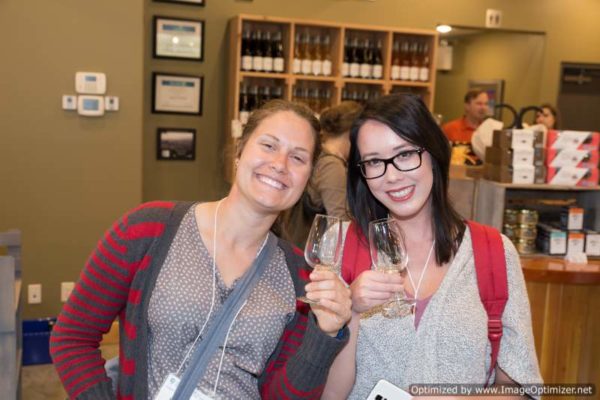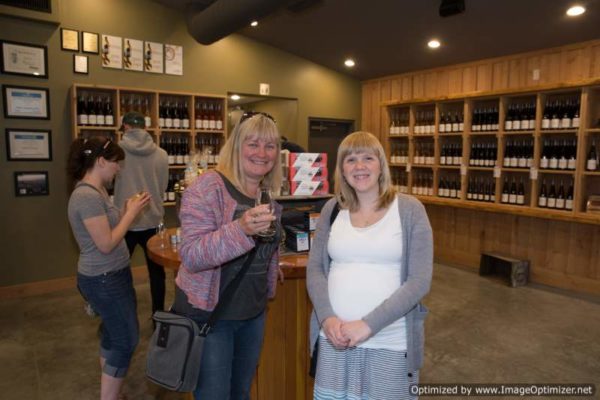–
Invasive Species Research Conference2017 Highlights
The Invasive Species Research Conference took place June 20 – 22, 2017 at Thompson Rivers University in Kamloops, British Columbia.
This not-to-be-missed Conference included keynote speakers; concurrent themed sessions with the invitation for oral presentations; poster presentations; lightning talks; a focused, facilitated discussion on future research priorities for BC and a series of optional field trips in the Kamloops area. The Conference highlights follow below and the full final program is also available for download.
The Conference drew 110 attendees, from diverse backgrounds and locations including researchers, practitioners, stewardship groups, and local, provincial and federal government and included presenters from as far as Wales (UK), New York, Alaska, Tennessee, Quebec and the Yukon.
Themed Sessions
Each day a hot topic research presentation followed the keynote presentation. June 20th’s hot topic presentation was on “Utility of unmanned aerial vehicles for mapping invasive plant species: a case study on Yellow flag iris (Iris pseudacorus L.)” by Garrett Whitworth.

On June 21st, Cathryn Abbott presented the hot topic presentation on “Building DNA reference libraries to enable the development of eDNA metabarcoding tools for invasive species detection”.
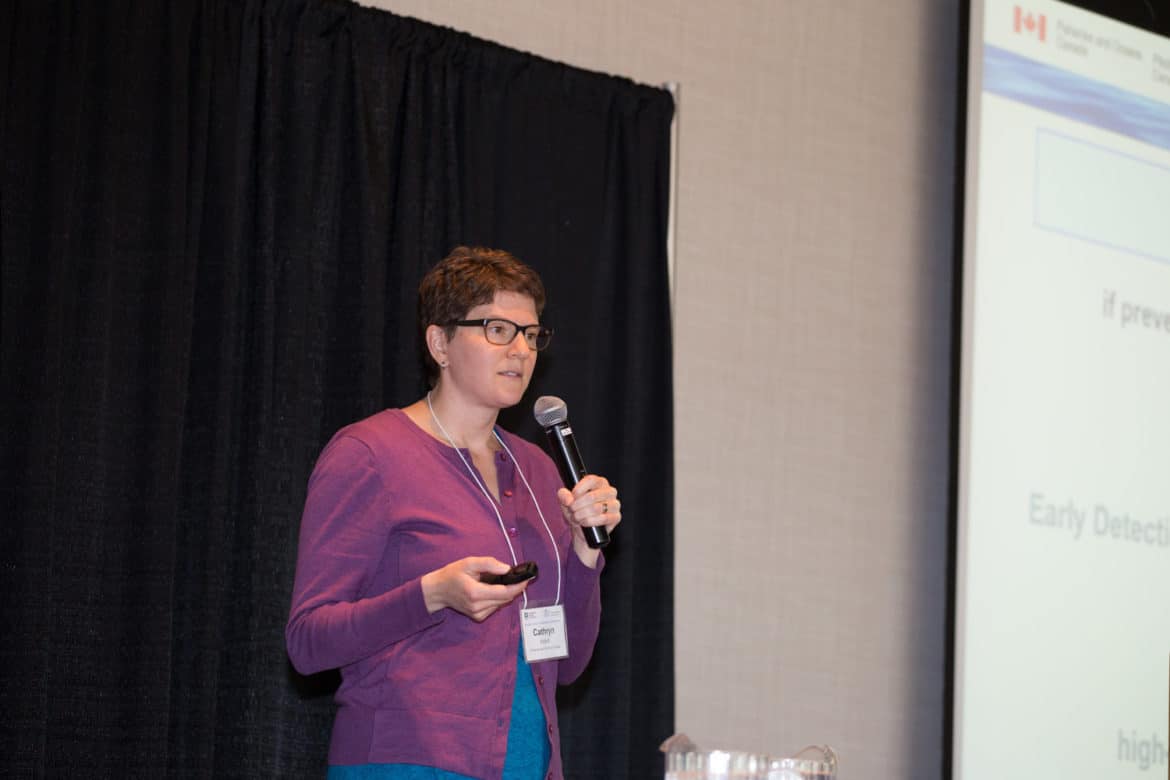
The core component of the Conference was a series of concurrent themed sessions:
- Environmental DNA and the Detection of Invasive Species
- Ecological Restoration Following Invasion
- Social Aspects of Invasion
- New Approaches to Invasive Species Management
- Risk Assessment of Invasive Species
- Tracking Invaders: Where are they?
- From Just Taking up Space to an Invasive Meltdown
Lightning Talks
On day one, the Conference featured a series of punchy, five-minute long presentations – with no time for Q&A. This proved to be a very popular component of the Conference and attendees had the opportunity to connect with the lightning talk presenters during lunch and additional refreshment breaks.
Research Priorities
On both days of the formal program attendees had the opportunity to provide input on future invasive species research priorities during each session. Each of the themed sessions of research presentations concluded with input from attendees on what more research was needed in that area. On day two of the Conference Pam Giberson of Natural Sciences and Engineering Research Council of Canada (NSERC) presented on NSERC Research Partnership Grants. Following the presentation, all Conference attendees participated in a dedicated facilitated workshop, funded by NSERC, on research priorities and connections. Working in small groups on specific themes, attendees had meaningful discussion about the priorities for invasive species research in Western Canada.
Posters, Nibble & Network
On the evening of June 20th, attendees met 17 poster presenters and enjoyed refreshments as they learned and networked. The Poster, Nibble and Network session took place in the multi-level Rotunda of TRU’s Campus Activity Centre, which acted as a superb venue for the gallery of research posters and for facilitating networking amongst smaller groups of attendees simultaneously.
June 20 – Bat Field Trip
BAT OBSERVATION AND MIST NETTING
Conference attendees had the opportunity to register for optional field trips on the evening of Day One of the Conference (June 20th) and on June 22nd Day Three of the Conference. The optional scheduled field trips were:
At 9 pm sharp, participants departed TRU by bus to a rural location, approx 20 mins from Kamloops, where a colony of bats lives. Participants were able to see bats flying at dusk between barns, and observed experts mist-netting and measuring bats. Bat detectors on site also enabled participants to hear the echolocation calls of bats. Participants returned by bus to TRU by approx 11:30 pm.
June 22 – Day Field Trip
LAC DU BOIS GRASSLANDS PROTECTED AREA & KENNA CARTWRIGHT PARK
Grasslands cover less than 1% of BC, house more than 30% of BC threatened or endangered species, and represent the most endangered ecosystem in Canada. Lac Du Bois is a Provincially protected area approximately 16,000 ha located just north of Kamloops. This area encompasses three types of grasslands communities and incorporates a complex range use tenure system. Kenna Cartwright Park (KCP) is one of the largest (800 ha) urban parks in North America. A diverse history of utilization combined with high levels of visitor use make management of invasive species in this park a complex task. A variety of management tools have been utilized in KCP, many with dramatic effect.
On this field tour participants visited Lac Du Bois and discussed the grassland community types as well as water conservation and utilization issues. After ‘setting the stage’ in Lac Du Bois, the field trip headed to Kenna Cartwright Park to look at ‘management in action’. These efforts include tree canopy thinning, biocontrol, goats, and fire.
Transportation and bagged lunch was included. This trip departed TRU at 8:30 am and returned by 1 pm.
June 21 – Social
On the evening of June 21, Conference participants were offered an exclusive Winery Experience, with DiVine Tours of Kamloops, by executive coach, with the following itinerary:
- 4:45 pm – depart TRU for Monte Creek Ranch Winery for wine tasting and tour. Our host provided an overview of the history of Monte Creek and the character on the wine bottle, who was a “nice” train robber who coined teh phrase “Hands up”.
- 6:30pm – arrive at Harper’s Trail Winery for wine tasting and Italian sun-set dinner on the patio – catered by Eats Amore. Attendees were free to sample the wines and then dine on the patio at leisure
- 9:00pm – the participants were dropped off at TRU
The 2017 Invasive Species Research Conference included a diverse line-up of speakers presenting on a wide range of invasive species research topics. The permission to post presentations publicly was provided by most presenters. These slide decks can be viewed as PDFs by clicking the presentation title highlighted below:
June 20, 2017
Keynote Address: Managing invasives: Progress, Problems, and Polemics; Dr. Daniel Simberloff; University of Tennessee
“Hot Topic” Presentation 1: Utility of unmanned aerial vehicles for mapping invasive plant species: a case study on yellow flag iris (Iris pseudacorus L.); Garrett Whitworth; Thompson Rivers University
Session 1: Ecological Restoration Following Invasion
Effects of fire and herbivore exclusion fencing on native and non-native plant populations in a Garry Oak Ecosystem on Salt Spring Island in British Columbia: A role for deer grazing in novel ecosystem management? Jennifer Grenz; University of British Columbia
Implementing and maintaining ecological restoration efforts in urban estuary and riparian environments: a case study of MacKay Creek in North Vancouver; Julia Alards-Tomalin; Echo Ecological Enterprises
Session 2: Social Aspects of Invasion
Policy pitfalls and opportunities for marine invasive species management in Canada; Natascia Tamburello; ESSA Technologies
Socio-economic predictors of invasive plant species occurrence in urban green spaces of Metro Vancouver; Woongsoon Jang; University of British Columbia
Lightning Talks – a series of rapid fire 5 minute research presentations
Examining Soil Legacy of Spotted Knapweed; Matthew Coghill; Thompson Rivers University
The effect of time since burning on stem density of Dalmatian toadflax (Linaria dalmatica), Yellow toadflax (L. vulgaris), and Spotted knapweed (Centaurea maculosa);Gabrielle Hindley; Simon Fraser University
Assessing the Effectiveness of Fisheries Compensation Habitats for the Port Mann Highway 1 Improvement Project; Stephanie Cavaghan; Triton Environmental
Drought and invasiveness on temperate grasslands in the Southern Interior of British Columbia; Janelle Paulson; Thompson Rivers University
Problematic persistence of common carp and innovative measures to eradicate from a pond environment; Darryl Arsenault; Golder Associates Ltd.
Effects of the invasive plant, Spotted knapweed (Centaurea maculosa), on grassland arthropod communities and genomic barcoding solutions for ecosystem reclamation management; Jordann Foster; Thompson Rivers University
Kootenay Boundary Bullies: Protecting Northern Leopard Frogs Through Bullfrog Eradication; Morgan Sternberg; Central Kootenay Invasive Species Society
Comparing conventional and alternative control of Linaria genistifolia ssp. Dalmaticain a semi-arid grassland of British Columbia’s southern interior; Jacob Bradshaw; Thompson Rivers University
Session 3: New Approaches to Invasive Species Management
Potential for Glyphosate Resistance in Bohemian Knotweed (Fallopia x bohemica); Matthew Strelau; Trinity Western University
Bacterial diversity and virus detection in the invasive Yellow crazy ant; Meghan Cooling, Victoria University of Wellington
Anti-Pd activity: Can environmental microorganisms be used against Pseudogymnoascus destructans, the causative agent of white-nose syndrome? Naowarat Cheeptham; Thompson Rivers University
Session 4: Risk Assessment of Invasive Species
Assessing the Risk of Pacific Fisheries Regulation Schedule VIII Species; Thomas Therriault; Fisheries and Oceans Canada
Phragmites australis niches for other biota are similar on three continents; Erik Kiviat; Hudsonia
Evaluating movement of marine infrastructure as a pathway of aquatic invasive species spread; Josephine Iacarella; Institute of Ocean Sciences
Session 5: New Approaches to Invasive Species Management
Suppression of Invasive Northern Pike in Box Canyon Reservoir of the Pend Oreille River in northeast Washington State, USA; Nick Bean; Kalispel Tribe of Indians
Puncturevine (Tribulus terrestris) Control in the South Okanagan; Ken Sapsford; BC Ministry of Agriculture
Assessing Benthic Barriers vs. Aggressive Cutting as Effective Yellow Flag Iris (Iris pseudacorus) Control Mechanisms; Catherine Tarasoff; Thompson Rivers University
Northern Pike Invasion and Suppression in the Columbia River; Crystal Lawrence; Amec Foster Wheeler Environment & Infrastructure
Under the cover of rock snot: understanding the effects of didymo algae in Yukon; Heather Milligan; Yukon Government Department of Environment
Session 6: Risk Assessment of Invasive Species
Modeling the Risks and Damages from a “Potential” Invasive Plant Species: Yellow Starthistle (Centaurea Solstitialis); Sergey Tsynkevych; Simon Fraser University
Assessing the Risk of Marine Invasive Species in the Bering Sea; Amanda Droghini; Alaska Center for Conservation Science
How important is seed production in the spread of Japanese knotweed (Fallopia japonica)? Sharon Gillies; University of the Fraser Valley
Introduced Yellow Perch (Perca flavescens) in BC lakes: Feeding, movement and a possible control method; Carmen Tattersfield; Thomspon Rivers University
June 21, 2017
Keynote Address – Predicting Impact: A Challenge for Invasive Species Risk Assessment; Dr. Anthony Ricciardi, McGill University
“Hot Topic” Presentation – Building DNA Reference Libraries to Enable the Development of eDNA Metabarcoding Tools for Invasive Species Detection; Cathryn Abbott;Fisheries and Oceans Canada
Session 7: Molecular Approaches to Invasion Biology
Development of an eDNA metabarcoding tool for detection of invasive freshwater fish in British Columbia lakes; Davon Callander; Fisheries and Oceans Canada
Invasive rat colonization history and movement dynamics in Haida Gwaii; Bryson Sjodin; University of British Columbia Okanagan
Identifying marine invasive species from environmental DNA: a tool to inform the management of shellfish aquaculture movements. Kristen Westfall; Fisheries and Oceans Canada
Guest Speaker – Research Funding Partnership Opportunities for Companies & Researchers; Pam Giberson, NSERC
Session 8: Tracking invaders: Where are they?
Columbia River Invasive Northern Pike – Exploring Movements Through Physical and Chemical Means; Dan Doutaz; Thompson Rivers University
White-nose syndrome in the west: updates and strategies; Cori Lausen; Wildlife Conservation Society Canada
Occasional and established introduced ants in Washington and Oregon; Laurel Hansen; Spokane Falls Community College
Session 9: From just taking up space to an invasive meltdown
Shared experience of invasive grey squirrel management practice; Craig Shuttleworth; Bangor University (Wales)
Changes in age structure and diet of invasive centrarchid fish populations under management by electrofishing; Lungi Roberts; Trinity Western University
Two internationally renowned keynote speakers launched the proceedings on day one and day two: Dr. Daniel Simberloff and Dr. Anthony Ricciardi.
Dr. Simberloff presented on Managing Invasives: Progress, Problems, and Polemics.
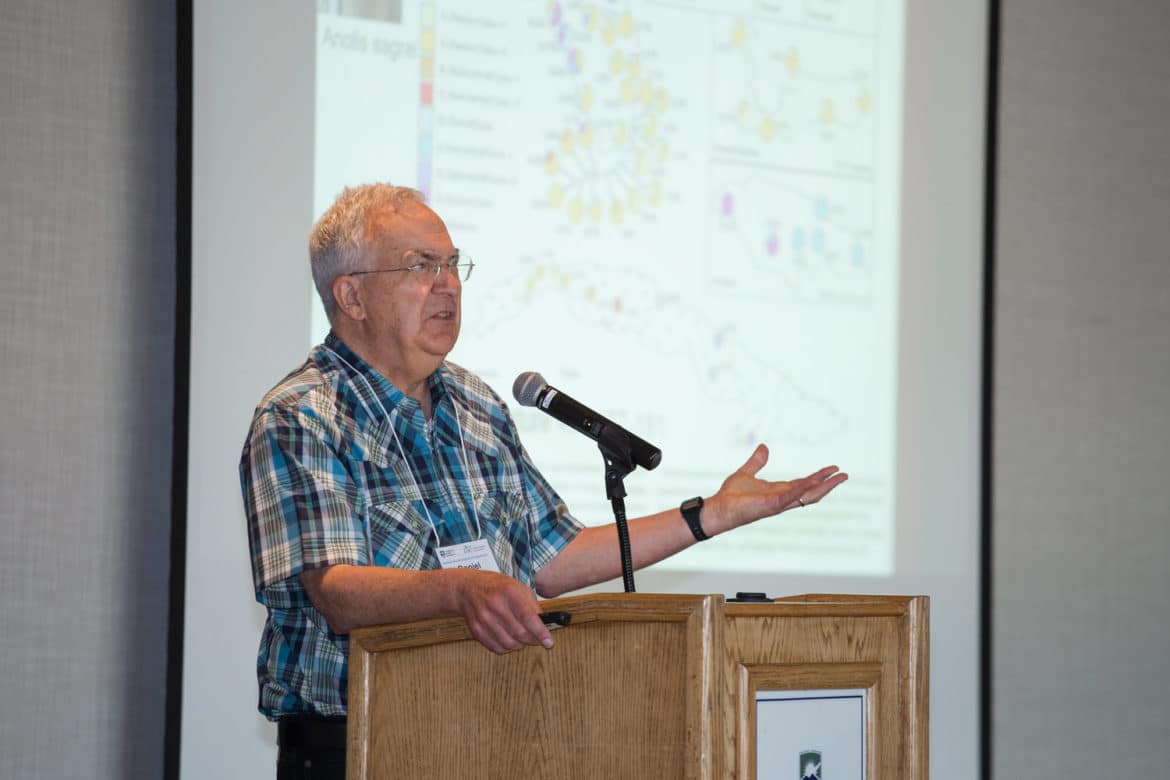
Dr. Ricciardi presented on Predicting Impact: A Challenge for Invasive Species Risk Assessment.
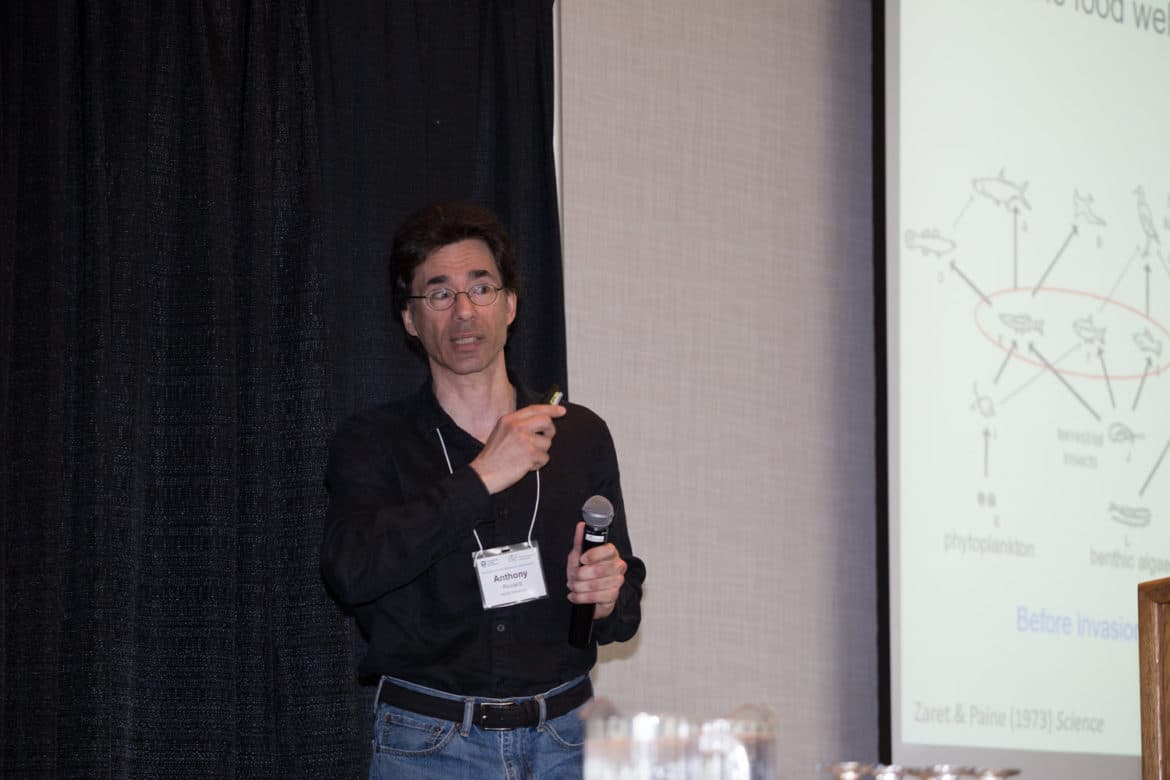
February 7 2017
KEYNOTE ADDRESS: Take Your Partners; Tim Readman, Stroke Recovery Association of BC.
Tim Readman is the Executive Director of the Stroke Recovery Association of BC and Professor at the UBC School of Rehabilitation Sciences in the Faculty of Medicine. Tim graduated from the University of Northumbria, in Newcastle upon Tyne, England, as an occupational therapist. He worked in the field of mental health as an O.T. before taking a position educating occupational therapy students. He immigrated to Canada in 1987 and managed the O.T. service at Vancouver General Hospital for 10 years. He then established a consultancy and has worked with health care organizations in the non-profit sector for the past 20 years, mainly in the field of organizational development. Tim is a professional musician, songwriter, producer and music journalist. He is also a dedicated supporter of Newcastle United Football Club aka The Magpies. Tim Readman has a long history of working with non-profits and has a successful track record of building innovative and effective partnerships at all levels. His talk will address the importance and challenges of building and maintaining partnerships; a key issue for us all.
SESSION 1: ENGAGING THE PUBLIC
2:05 pm Aquatic Invasive Species Campaigns in Alberta: Ninety Percent of the Solution; Kate Wilson, Alberta Environment & Parks
2:25 pm Engaging Youth – New Trends & Opportunities; Sue Staniforth, Invasive Species Council of BC
2:45 pm PlayCleanGo – The Future Stage; Barry Gibbs, Canadian Council on Invasive Species
SESSION 2: PARTNERING FOR SOLUTIONS WITH INDUSTRY
3:40 pm Biosecurity Practice to Stop the Spread of Invasive Species; Joe Caffrey, INVAS Biosecurity (Ireland)
4:00 pm Partnering to Achieve Operational Excellence in Vegetation Management; Dean Marshall, Spectrum Resource Group
4:20 pm International Ballast Water Regulations; Al Rushwan, Transport Canada
February 8 2017
KEYNOTE ADDRESS: 8:30 am Tackling Invasive Species – Experience from Europe; Joe Caffrey, INVAS Biosecurity (Ireland).
Joe Caffrey worked as a Senior Research Scientist with Inland Fisheries Ireland for 39 years, where he headed up the Invasive Species Section. Joe has project-led a number of multi-million euro national and international research projects and has been directly involved with the development of national and EU legislation relating to invasive species. He has written in excess of 80 peer reviewed scientific papers. In 2015 Joe joined INVAS Biosecurity as a Director, where he is continuing his work with invasive species.
Joe’s talk addressed current developments with invasive species research and management and the top issues relating to invasive species in Europe. He provided examples of some of the challenges and successes in invasive species control in Ireland. He also discussed the impact that the new EU Regulation on invasive alien species (No. 1143/2014) will have on the control of invasive species in Europe.
SESSION 3: EMERGING ISSUES OF INVASIVE SPECIES
9:15 am Invasive Species and Species-at-Risk Assessment in BC; Eric Taylor, Committee on the Status of Endangered Wildlife in Canada
9:35 am Prioritizing Invasive Species for Management in a Changing Climate; Shauna-Lee Chai, InnoTech Alberta
9:55 am Rapidly Responding: Montana’s Recent Invasive Mussel Detections; Stephanie Hester, Montana Department of Natural Resources and Conservation
SESSION 4: PROVINCIAL SPOTLIGHT
10:45 am Inter Ministry Invasive Species Working Group; Dominique Sigg, Matthias Herborg and Martina Beck, BC Ministry of Environment
11:00 am EDRR Successes in 2016 – BC Government Highlights; Becky Brown, Ministry of Forests, Lands & Natural Resource Operations
11:15 am Highlights of 2016; Jodi Romyn, Invasive Species Council of BC Forum Agenda
11:40 am Annual General Meeting & Together in Action Awards
SESSION 5: SPEEDY SESSIONS
This concurrent session featured multiple hosted tables focusing on high interest topics. Attendees had the opportunity to engage in meaningful dialogue and make connections during this high energy session.
SESSION 6: MOVING FORWARD AT THE NATIONAL LEVEL
3:20 pm Invasive Alien Species and Domestic Plant Health Programs; Mélanie Gauthier, Canadian Food Inspection Agency
3:40 pm The Role of Marine Science in Supporting the New Canadian Aquatic Invasive Species Regulations; Tom Therriault, Department of Fisheries & Oceans Canada
4:00 pm CLOSING SESSION: Future Directions Looking forward at emerging opportunities and challenges; Brian Heise, Invasive Species Council of BC &
February 9 2017 Post Forum Workshops
KNOTWEEDS WORKSHOP
8:45 am Setting the Stage on Knotweeds; Crystal Chadburn, Ministry of Transportation and Infrastructure; Becky Brown, Ministry of Forests, Lands and Natural Resource Operations
9:00 am Knotweed Research Updates; David Clements, Trinity Western University
9:15 am Knotweed Treatment; Bob Drinkwater, Drinkwater Environmental Services
9:30 am Moving Forward – Input on Knotweeds; round table sharing solutions
10:05 am Discussion and Recommendations
FIRE ANTS WORKSHOP
10:30 am Addressing European Fire Ants & Other Invasive Ants in BC; Rob Higgins, Thompson Rivers University
10:50 am Ants in our Plants: Control Trials and Tribulations with European Fire Ants; Cynthia Sayre, VanDusen Botanical Gardens
11:10 am Moving Forward – Input on Ants; round table sharing solutions
11:50 am Discussion and Recommendations
SOIL WORKSHOP
1:00 pm Soil Workshop Panel Discussion: Dominique Sigg, Ministry of Environment; Carolyn Richman, District of Saanich; Laurie Bates-Frymel, Metro Vancouver Regional District; Taryn Hesketh, City of Richmond.
1:00 pm Introduction & Setting the Stage
1:20 pm Discussion: Key Vectors & Responsibilities
1:50 pm Discussion: Short & Long Term Solutions
2:20 pm Next Steps


